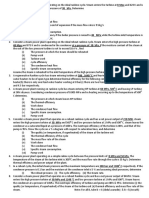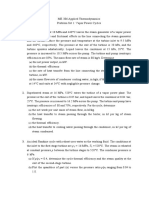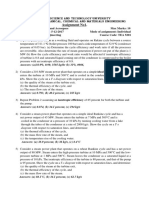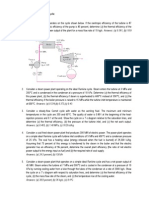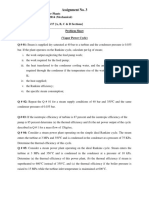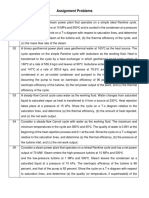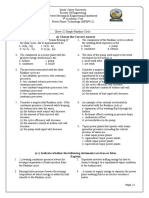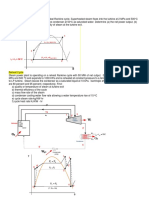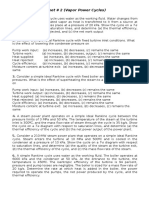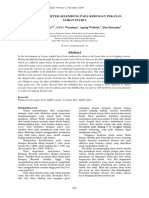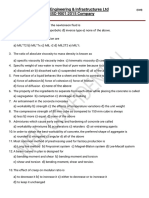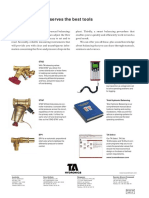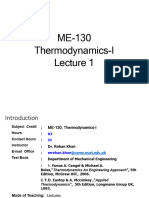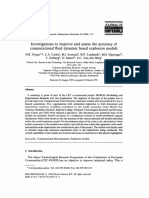MMÜ 205 Thermodynamics
Suggested problems - set # 7
1) A steam power plant as shown in the figure operating in a
Rankine cycle has saturated vapor at 3 MPa leaving the
boiler. The turbine exhausts to the condenser operating at
10 kPa. Water leaves the condenser as saturated liquid.
Find the specific work and heat transfer in each of the ideal
components and the cycle efficiency.
2) In a particular reheat-cycle power plant, steam enters the high-pressure turbine at 5 MPa, 450°C and
expands to 0.5 MPa, after which it is reheated to 450°C. The steam is then expanded through the low-
pressure turbine to 7.5 kPa. Liquid water leaves the condenser at 30°C, is pumped to 5MPa, and then
returned to the steam generator. Each turbine
is adiabatic with an isentropic efficiency of 87%
and the pump efficiency is 82%. If the total
power output of the turbines is 10 MW,
determine the mass flow rate of steam, the
pump power input and the thermal efficiency
of the power plant.
3) A steam power operating in an ideal Rankine cycle has a pressure of 5 MPa and a low pressure
of 15 kPa. The turbine exhaust state should have a quality of at least 95%, and the turbine
power should be 7.5 MW. Find the required boiler exit temperature and the mass flow rate.
4) A small steam power plant has a boiler exit of 3 MPa and 400°C while it maintains 50 kPa in the
condenser. All the components are ideal except the turbine, which has an isentropic efficiency
of 80%. If the turbine should deliver 9.0 MW to an electric generator, find
a. The specific turbine work
b. The needed flow rate of steam
c. The cycle efficiency
�5) Superheated steam at 18 MPa, 560 °C enters the turbine of a vapor power plant. The pressure
at the exit of the turbine is 0.06 bar, and liquid leaves the condenser at 0.045 bar, 26 °C. The
pressure is increased to 18.2 MPa across the pump. The turbine and pump have isentropic
efficiencies of 82 and 77 %, respectively. For the cycle, determine
a. The net work per unit mass of steam flow
b. The heat transfer to steam passing through the boiler
c. The thermal efficiency
d. The heat transfer to cooling water passing through the condenser
6) Consider the ammonia Rankine-cycle power plant shown in the figure below. The plant was
designed to operate in a location where the ocean water temperature is 25°C near the surface and
5°C at some greater depth. The mass flow rate of the working fluid is 1000 kg/s.
a. Determine the turbine power output and the pump power input for the cycle.
b. Determine the mass flow rate of water through each heat exchanger.
c. What is the thermal efficiency of this power plant?




